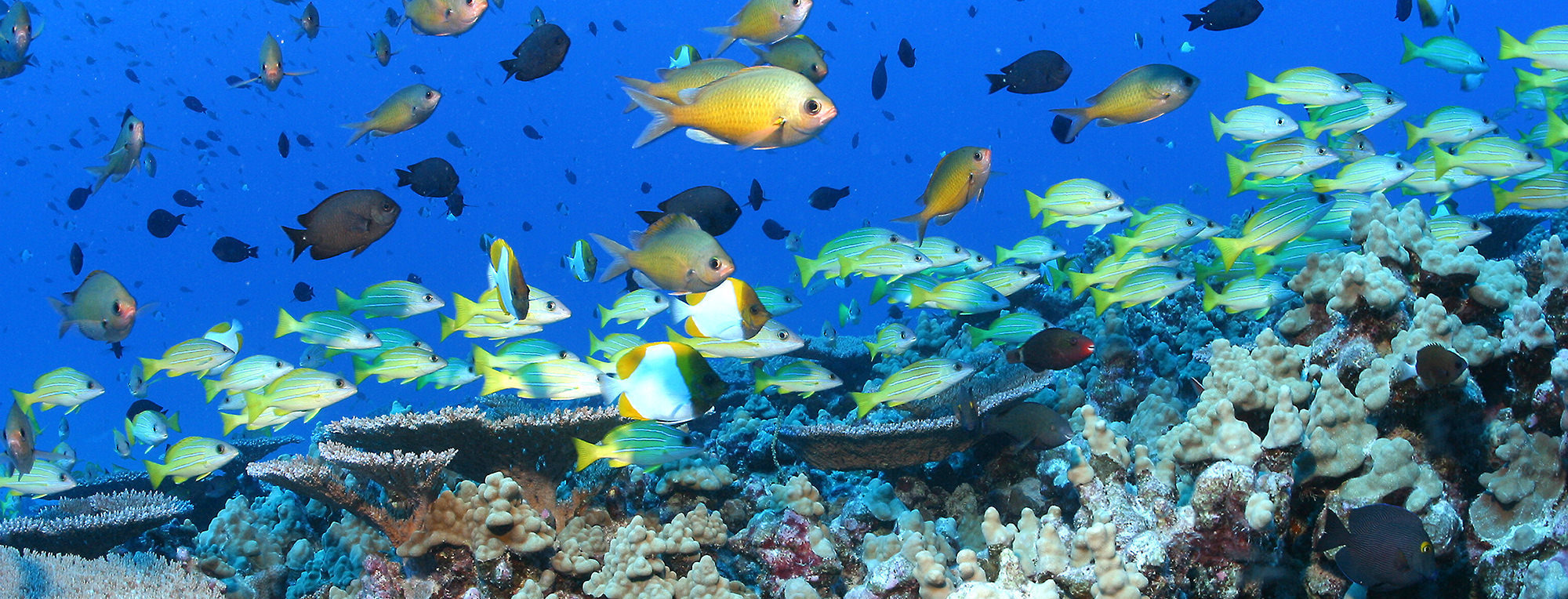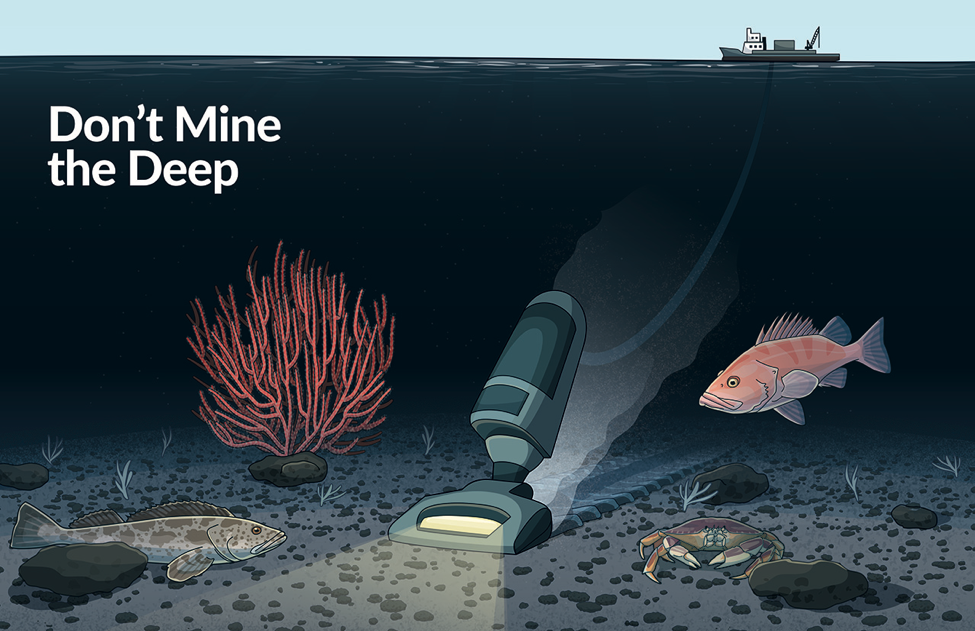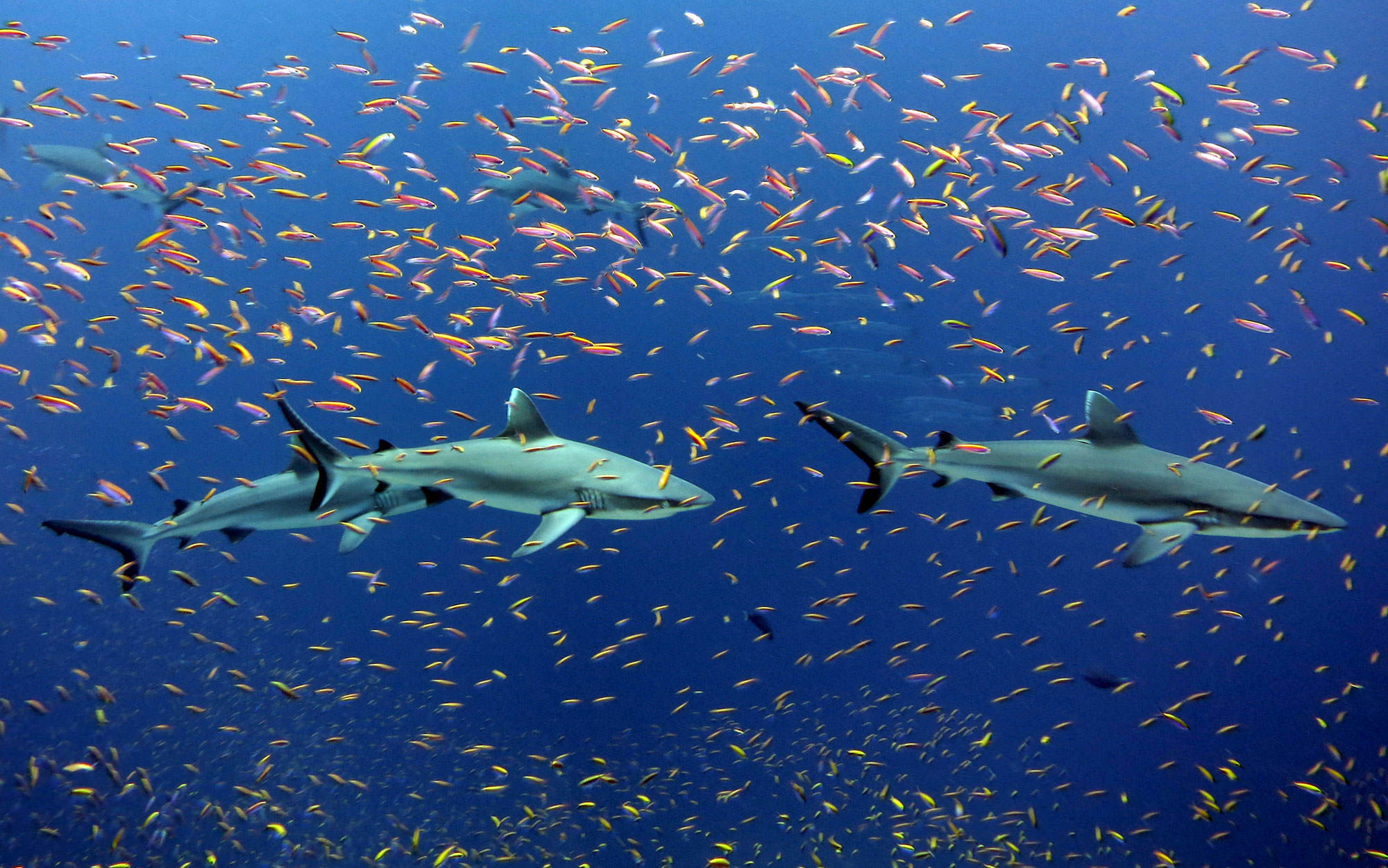
A global industry is setting its sights on extracting valuable metals from the seafloor
These days, it’s hard to keep track of all the different threats facing our ocean. From pollution to climate change to overfishing to energy projects, our marine ecosystems are facing an onslaught of impacts from human activities. Yet, in the coming decades, our ocean will face a new threat from a developing industry: seabed mining for mineral resources such as gold, copper, phosphorus, manganese, cobalt and zinc.
Seabed mining involves the extraction of valuable minerals from the seafloor through harmful disruption of the environment. Driven by an increasing demand for rare metals and advances in extractive technology, companies around the globe are looking at the ocean as the “next frontier” to harvest these resources. Unfortunately, the health and productively of marine ecosystems, as well as the human communities that depend on them, hangs in the balance.

Image: Pew Charitable Trust
While the specific nature of mining activities varies, the general process involves disturbance - and often damage - to seafloor habitats. In order to collect mineral deposits, ships “vacuum” sandy bottom habitats using dredging equipment, impacting the marine life that rely on these environments for survival. Such suction dredging stirs up sediments in the water column, blocking sunlight and disorienting plankton and fish. Large seabed mining machinery can also generate extraordinary noise pollution and spew toxic effluent, harming kelp forests, rocky reefs, eelgrass meadows, estuaries and other important ecological areas.
In deeper waters, seabed mining can involve scraping a foot or more off seamounts that are rich in nodules containing minerals. These “underwater mountains” are often located near hydrothermal vents at 4,600 to 12,100 feet below the ocean’s surface, and host complex communities containing incredible biodiversity. Such areas include sensitive species of corals and sponges, as well as tuna, sharks, dolphins and sea turtles. Regrettably, these magnificent places are increasingly being targeted by the destructive practice of seabed mining, which causes irreparable damage to these unique ecosystems.
Seabed mining also poses a threat to popular human activities that generate enormous economic benefits and contribute to our quality of life. Beachgoing, whale watching, diving, surfing, paddling, swimming and other forms of ocean recreation are practiced by millions of people and result in billions of dollars in revenue for coastal communities. The expansion of seabed mining, particularly in nearshore environments, may cause damaging impacts to recreational opportunities and related socioeconomic benefits.

Of course, the root cause driving the expansion of seabed mining is human consumption. A growing number of products, from cell phones to supercomputers, depend on precious metals that can be found on the ocean floor. And, as highlighted in recent media coverage, the growth of the electric car industry is partly responsible for fueling interest in seabed mining. Metal cobalt is an essential ingredient in electric car batteries, which is sometimes found in abundant rock aggregations on the seabed. This represents a brutal irony that human efforts to curb climate change by transitioning away from fossil fuels may trigger new types of environmental impacts on the ocean. These impacts could in turn damage certain marine ecosystems that provide some of the world's most effective carbon sequestration benefits, further exacerbating climate change issues.
So what’s the solution to this conundrum? Well, as with almost any environmental problem, the answer must start with conservation. All of us who are fortunate to enjoy a first-world lifestyle must take responsibility for consuming less of everything. It also reinforces the key role that recycling of products containing precious metals - phones, cars, batteries, computers - must play in limiting the demand for more raw materials to be mined from the land and ocean.
Nevertheless, the writing is on the wall: industry is coming for the ocean and we are shockingly unprepared to deal with the surge of interest. Seabed mining in U.S. waters is currently regulated under an inadequate patchwork of federal and state management. Most regulations contain little in the way of specific environmental standards, instead relying on generalities to be applied only on a case by case basis. In international waters, the situation is even worse. The United Nations has designated the International Seabed Authority to govern activities, but they have limited regulatory authority and focus on mitigation rather than prevention.
That’s why the Surfrider Foundation is looking at strategies to protect the marine environment from seabed mining. As part of our Ocean Protection initiative, we are exploring opportunities to implement precautionary closures in state waters (within 3 nautical miles of shore) similar to what Oregon adopted in 1991. Surfrider also believes we need specific environmental standards, as well as spatial protections for habitats that support a disproportionate amount of biodiversity and ecological functions. Accordingly, we support the designation of marine protected areas (MPAs) to protect underwater seamounts and other critical habitats from these destructive activities. Please stay tuned for more updates on this issue!
Learn More
Seabed mining beachapedia article
Surfrider’s support for the 30x30 campaign
Save California’s Seamounts website
